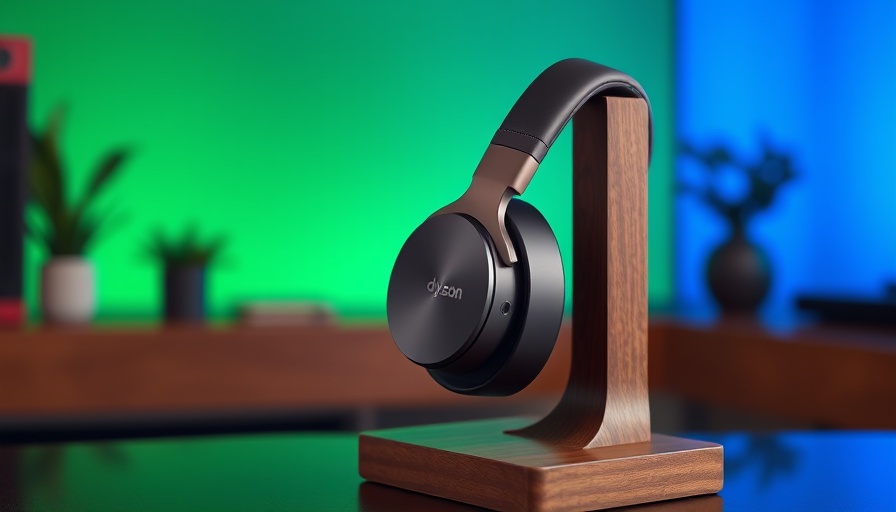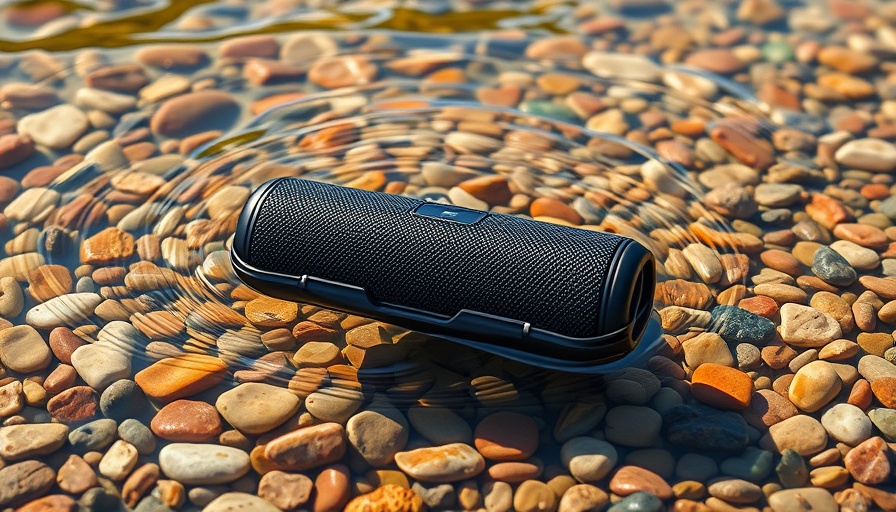
Dyson's Controversial Journey with Headphones
Dyson is a brand often synonymous with innovation and excellence in technology. From their cutting-edge vacuum cleaners to their famed fanless heating systems, the company's advancements typically receive widespread praise. Yet, with the introduction of the Dyson Zone headphones, it seemed the company missed the mark significantly. Announced for discontinuation in 2025, the Dyson Zone headphones have sparked considerable debate regarding their design, practicality, and overall purpose.
The Unveiling of the Dyson Zone: A Misguided Experiment?
When Dyson unveiled the Zone headphones amid rising health concerns due to air pollution and the COVID-19 pandemic, the hope was that they would be an innovative solution combining audio comfort and air purification. However, as reviews poured in, it became clear that these headphones were perceived more like a gimmick than a necessity. Critics highlighted the cumbersome design, price point, and the impracticality of wearing a mask integrated with headphones in daily life. The Zone's comparison to iconic items like Bane's mask from 'The Dark Knight Rises' only emphasized how out of sync the product was with consumer expectations and trends.
Too Late for a Timely Solution
As Jake Dyson himself stated, the headphones were “completely ahead of its time.” However, the real issue appeared to be that they were too late. Released in a post-pandemic world where mask mandates were lifting, the Zone lacked appeal. Had these headphones been launched in 2020, during the COVID-19 peak, they might've captured more consumer interest. Instead, consumer response in 2023 reflected a lack of appetite for a product that combined cumbersome design with a high price tag, leading to their rapid phase-out.
A Shift Towards Simplicity: Enter the Dyson OnTrac
In a bid to recover from this blunder, Dyson has pivoted with the introduction of the OnTrac headphones. Priced at $499.99, these new headphones eliminate the controversial mask element altogether, focusing solely on delivering quality audio. This shift illustrates Dyson’s acknowledgment that a simpler, more refined product is what consumers desire. It’s a response that acknowledges the missteps of the past while aiming for a more traditional and sought-after market segment.
Impact on Dyson's Brand Image
The discontinuation of the Dyson Zone headphones raises important questions about how innovative companies can simultaneously embrace risk while maintaining a solid brand image. Failure in product launches can create a narrative that impacts consumer trust, as seen with how this specific product has tainted Dyson’s otherwise sterling reputation. It remains an important lesson for tech companies: while innovation is crucial, so is understanding the target market and consumer needs.
Lessons Learned: What this Means for Future Innovations
This episode serves as a fundamental case study for tech firms looking to innovate in an ever-complex environment. The Dyson Zone headphones highlight the importance of market timing, consumer need assessment, and the weight of product design decisions. With the rapid pace of technological advancement and changing consumer behaviors, brands must remain agile, adapting ideas and logistics in concert with what their audience truly wants.
Final Thoughts: Will Dyson Bounce Back?
The future of Dyson hinges on how well they can learn from the lessons presented by the Zone headphones. Will the OnTrac reclaim customer confidence? As consumer technology continues to evolve, the race towards integrating functionality with design innovation will undeniably remain at the forefront of Dyson's strategy. Ideally, the hope is to strike a balance that respects their heritage while embracing modern consumer needs.
With brands continually pushing the envelope, consumers will always be watching how mistakes shape future innovations—whether for Dyson or any of their competitors. It’s a fascinating time in tech, and the story of the Dyson Zone serves as a reminder of both the risks and rewards integral to market success.
 Add Row
Add Row  Add
Add 




Write A Comment